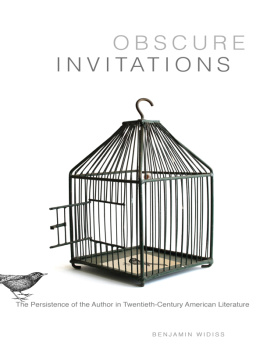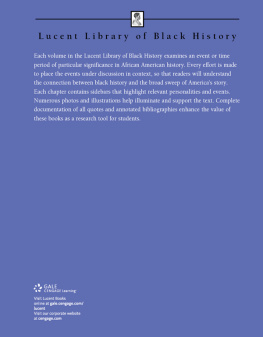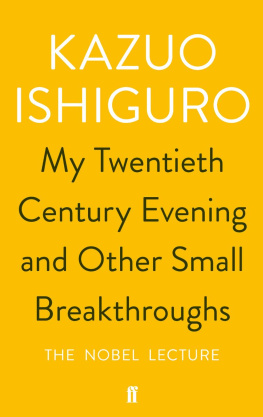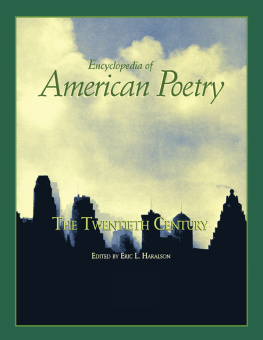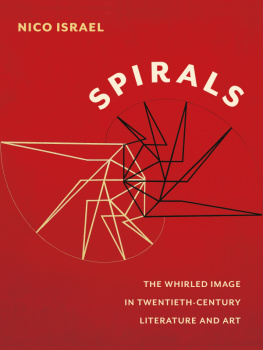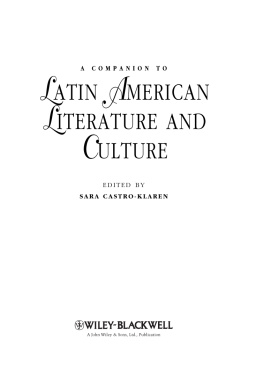Widiss - Obscure Invitations: The Persistence of the Author in Twentieth-century American Literature
Here you can read online Widiss - Obscure Invitations: The Persistence of the Author in Twentieth-century American Literature full text of the book (entire story) in english for free. Download pdf and epub, get meaning, cover and reviews about this ebook. year: 2011, publisher: Stanford University Press, genre: Detective and thriller. Description of the work, (preface) as well as reviews are available. Best literature library LitArk.com created for fans of good reading and offers a wide selection of genres:
Romance novel
Science fiction
Adventure
Detective
Science
History
Home and family
Prose
Art
Politics
Computer
Non-fiction
Religion
Business
Children
Humor
Choose a favorite category and find really read worthwhile books. Enjoy immersion in the world of imagination, feel the emotions of the characters or learn something new for yourself, make an fascinating discovery.
- Book:Obscure Invitations: The Persistence of the Author in Twentieth-century American Literature
- Author:
- Publisher:Stanford University Press
- Genre:
- Year:2011
- Rating:4 / 5
- Favourites:Add to favourites
- Your mark:
- 80
- 1
- 2
- 3
- 4
- 5
Obscure Invitations: The Persistence of the Author in Twentieth-century American Literature: summary, description and annotation
We offer to read an annotation, description, summary or preface (depends on what the author of the book "Obscure Invitations: The Persistence of the Author in Twentieth-century American Literature" wrote himself). If you haven't found the necessary information about the book — write in the comments, we will try to find it.
Widiss: author's other books
Who wrote Obscure Invitations: The Persistence of the Author in Twentieth-century American Literature? Find out the surname, the name of the author of the book and a list of all author's works by series.
Obscure Invitations: The Persistence of the Author in Twentieth-century American Literature — read online for free the complete book (whole text) full work
Below is the text of the book, divided by pages. System saving the place of the last page read, allows you to conveniently read the book "Obscure Invitations: The Persistence of the Author in Twentieth-century American Literature" online for free, without having to search again every time where you left off. Put a bookmark, and you can go to the page where you finished reading at any time.
Font size:
Interval:
Bookmark:

OBSCURE INVITATIONS
OBSCURE INVITATIONS
THE PERSISTENCE OF THE AUTHOR
IN TWENTIETH CENTURY
AMERICAN LITERATURE
BENJAMIN WIDISS

Stanford University Press
Stanford, California
2011 by the Board of Trustees of the Leland Stanford Junior University. All rights reserved.
No part of this book may be reproduced or transmitted in any form or by any means, electronic or mechanical, including photocopying and recording, or in any information storage or retrieval system without the prior written permission of Stanford University Press.
Printed in the United States of America on acid-free, archival-quality paper
Library of Congress Cataloging-in-Publication Data
Widiss, Benjamin Leigh, author.
Obscure invitations : the persistence of the author in twentieth-century
American literature / Benjamin Widiss.
pages cm
Includes bibliographical references and index.
ISBN 978-0-8047-7322-5 (cloth : alk. paper)ISBN 978-0-8047-7323-2 (pbk. : alk. paper)
1. American literature20th centuryHistory and criticism. 2. Authorship in literature.
3. AuthorshipHistory20th century. 4. Authors and readersHistory20th century.
I. Title.
PS228.A88W53 2011
810.9005dc22
2011004861
E-book ISBN: 978-0-8047-8068-1
FOR LOUISA AND ABEL, AND NOW SARAH
ACKNOWLEDGMENTS
One of the greatest pleasures of bringing this book to completion is the chance to thank the many who helped it and me along the way. It is no overstatement to say that without them the book would not exist. Foremost among these is Dorothy Hale, who has been central to my intellectual and professional development from my sophomore year of college to the present moment. No one has taught me more about how to write, and I suspect no one save the members of my own family (and perhaps a favorite author or two) has taught me more about how to think. Her singular blend of unfailing personal generosity and unstinting critical insight is crucial to these pages, and inspires me far beyond them. The specific genesis of this book lay in a seminar on William Faulkner led with incomparable verve and rigor by Carolyn Porter; while the book has gone on to embrace many other figures, it remains grounded in that experience and in her responses to my work. Eric Naiman not only taught me much about Vladimir Nabokov, but offered stringent and incisive critiques of many other elements of my thinking as well. The project has further benefited from discussions with Charles Altieri, Ann Banfield, John Bishop, Catherine Gallagher, Celeste Langan, and George Starr, and from tenacious early readings by Erika Clowes, Gillian Epstein, Luciana Herman, Heather Levien, Kim Magowan, Diane Matlock, Mayumi Takada, and, most especially, Joseph Jeon and Florence Dore, who have continued to give enormously of their time and sagacityand, far from least, their good humorthrough every stage of its advance.
I am powerfully indebted to many colleagues and students at Princeton who have propelled and sharpened this work through timely conversations, engaged readings, acute questions and suggestions, and general cheer. I would particularly like to thank Oliver Arnold, David Ball, Matt Bieber, Daphne Brooks, Christopher Bush, Anne Cheng, Lawrence Danson, Maria DiBattista, Jeff Dolven, Diana Fuss, Sophie Gee, William Gleason, Claudia Johnson, Ann Jurecic, Soo La Kim, Ulrich Knoepflmacher, Meredith Martin, Lee Mitchell, Deborah Nord, Jeff Nunokawa, Heather ODonnell, Sarah Rivett, Gayle Salamon, Elaine Showalter, Nigel Smith, Anne Sobel, Susan Stewart, Kerry Walk, Tim Watson, Tamsen Wolff, Susan Wolfson, and Michael Wood. And with them Christine Faltum, Pat Guglielmi, Kevin Mensch, Karen Mink, Marcia Rosh, and Nancy Shillingford, who together keep both the department and me moving forward. Mark Maslan and a second, anonymous reader for Stanford University Press offered capacious, keen, and entirely constructive responses to the manuscript; it is enriched by their input. My editor, Emily-Jane Cohen, assisted by Sarah Crane Newman and a truly stunning production teameagle-eyed, tireless, and dizzyingly fleethas shepherded the project to its final form most fluently.
And then there are those relationships that leave the institutional wholly behind. I am endlessly grateful for the support, friendship, and high spirits, all along the way, of Loretta Chen, Jonathan Davis, Stephanie Green, Brian Lee, Matthew Pincus, Ted Robertson, Jackie Starr, Alex Thompson, Abigail Trillin, Charles Tung, Paula Vielmetti, Alex Winter, and especially Jim Hinch and Ramu Nagappan, with whom I have shared classes, houses, peregrinations near and far, and the most wide-ranging of reflections. And in the final going: Christopher Chyba and Deborah Pearlstein, Debbie Finkelstein and Mike Silverberg, Tom Hagedorn and Julie Landweber, and Wey-Wey Kwok and Blue Montakhab. Louise Chegwidden and Jaclyn Boone made the work physically possible, and in the best moments joined the mighty, mighty KALX in setting me to dancing.
My parents, Alan and Ellen Widiss, first taught me to cherish authorial invitations, albeit invitations construed in somewhat less abstruse terms. Their influence colors this writing obliquely but profoundly, and their belief subtends it at a yet deeper level. My extraordinary sisters, Deborah Widiss and Rebecca Widiss, have ever provided counsel, creativity, and conviviality of the very highest order. Doug Goldstein, indefatigable comrade-in-arms, has joined their ranks, too. The last phase of this books long gestation brought first Louisa Ruffine and then Abel Widiss into my life. In ways far too numerous to recount, or even count, they have offered the most joyous of distractions from the work and the most selfless encouragement to return to it. My words can neither recognize nor thank them enough.
OBSCURE INVITATIONS
INTRODUCTION
Why obscure an invitation?
It seems, for a moment, like a contradiction in termsthe open hand half-withdrawn, the beckoning path perversely shrouded, the appeal hobbled and slowed before it is even properly advanced. This dissonance can be resolved by imagining pragmatic grounds: decorum, or established protocols, or even self-protection. Such considerations will enter, obliquely and intermittently, in the chapters that follow, but I am primarily concerned with two alternative motivationsless immediate, less urgent, one might go so far as to say more willful. The first is a spirit of play, in which obscurity serves to augment the more recondite pleasures, for both inviter and invitee, inhering in a veiled interaction. The second is a process of tutelage, each step in the discernment and pursuit of an invitation changing the seeker in small but finally significant ways. These two rationales are far from mutually exclusive, and they have in common their welcome of the delay obscurity confers, freely distending the interval in which an invitation wholly emerges, or profiting by the lengthy expanse (of time, of text) in which it might fully unfold. Both will factor, in varying combinations and degrees, in each of the works I discuss herein, each embracing the longueurs and divagations of the narrative form to stage a dialogue equally as sustained as it is surreptitious.
The texts are, in many other respects, a relatively heterogeneous grouping: two novels, two memoirs, and two feature films; dating from 1930 to 2000; ranging from high modernism to a foray into post-postmodernism, from the projection of an airy elitism to that of an earthy populism, and from the thoroughly canonized to the all-but-untouched-by-academic-critique. They are drawn together here by the particularly artful, and broadly consistent, ways in which they both manage and figure the practice of authorship in twentieth-century America. In so doing, they complicate received wisdom regarding the constitution of and distinctions between literary movements and moments, and shepherd us to a fuller understanding of the stakes and strategies of writing throughout the century. The obscure invitation that each text issues is to a self-conscious apprehension of, and perhaps by extension a form of communion with, its author. At its most basic this is no more than a simple structural homology between reader and author, at its most extreme a full-on annexation of Eucharistic ritual. The emotional valence of this convergence is highly malleable; it may constitute a threat to the reader or a reassurance, a promise or a plea, at the limit a mere observation of proximity otherwise unremarked. That is to say, the call to like an author, or to be like an author, is susceptible to considerable tonal variation; the relationship does not rise free of the text, but instead partakes of all the emotional vagaries of any accomplished artwork.
Font size:
Interval:
Bookmark:
Similar books «Obscure Invitations: The Persistence of the Author in Twentieth-century American Literature»
Look at similar books to Obscure Invitations: The Persistence of the Author in Twentieth-century American Literature. We have selected literature similar in name and meaning in the hope of providing readers with more options to find new, interesting, not yet read works.
Discussion, reviews of the book Obscure Invitations: The Persistence of the Author in Twentieth-century American Literature and just readers' own opinions. Leave your comments, write what you think about the work, its meaning or the main characters. Specify what exactly you liked and what you didn't like, and why you think so.

